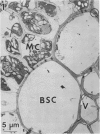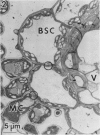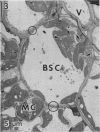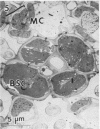Abstract
Ultrastructural studies of leaves of seven Panicum species in or closely related to the Laxa group and classified as C3, C4 or C3-C4 intermediate were undertaken to examine features associated with C3 and C4 photosynthesis. The C3 species Panicum rivulare Trin. had few organelles in bundle sheath cell profiles (2 chloroplasts, 1.1 mitochondria, and 0.3 peroxisomes per cell section) compared to an average of 10.6 chloroplasts, 17.7 mitochondria, and 3.2 peroxisomes per bundle sheath cell profile for three C3-C4 species, Panicum milioides Nees ex Trin., Panicum decipiens Nees ex Trin. and Panicum schenckii Hack. However, two other C3 species, Panicum laxum Sw. and Panicum hylaeicum Mez, contained about 0.7, 0.5, and 0.3 as many chloroplasts, mitochondria, and peroxisomes, respectively, as in bundle sheath cell profiles of the C3-C4 species. Chloroplasts and mitochondria in bundle sheath cells were larger than those in mesophyll cells for the C4 species Panicum prionitis Griseb. and the C3-C4 species, but in C3 species the organelles were similar in size or were smaller in the bundle sheath cells. The C3-C4 species and P. laxum and P. hylaeicum exhibited an unusually close association of organelles in bundle sheath cells with mitochondria frequently surrounded in profile by chloroplasts. The high concentrations in bundle sheath cells of somewhat larger organelles than in mesophyll cells correlates with the reduced photorespiration of the C3-C4 species.
Full text
PDF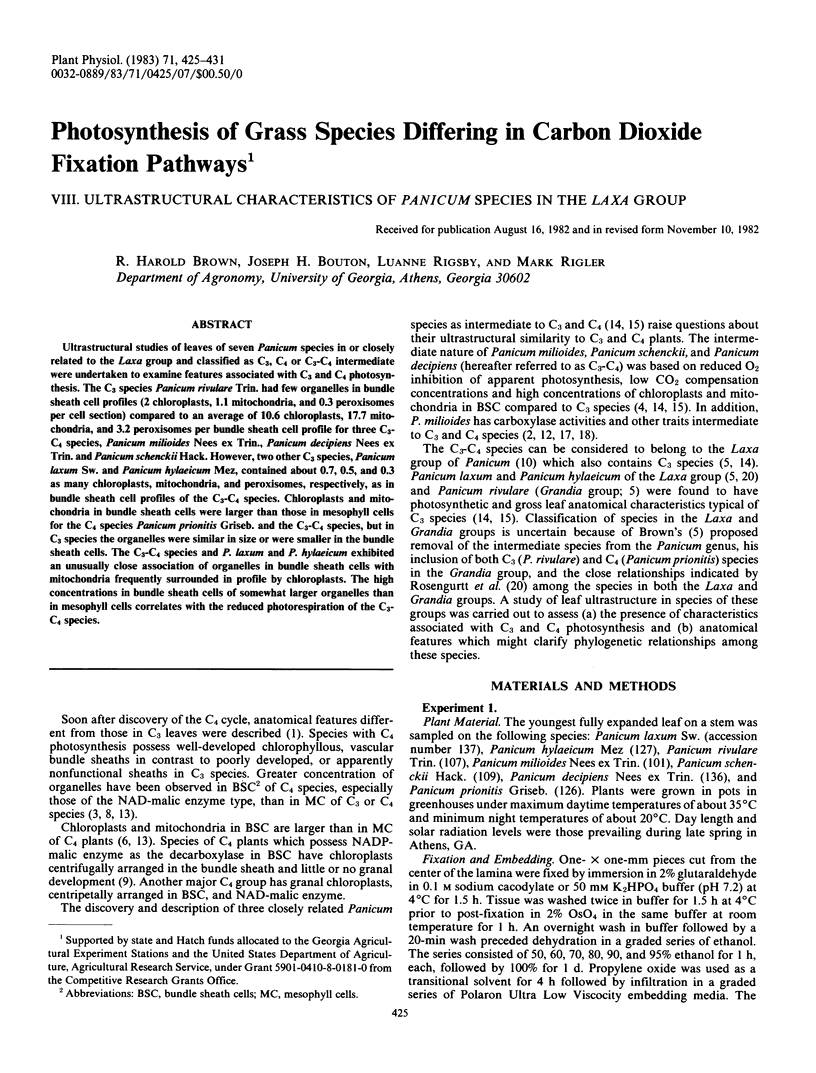
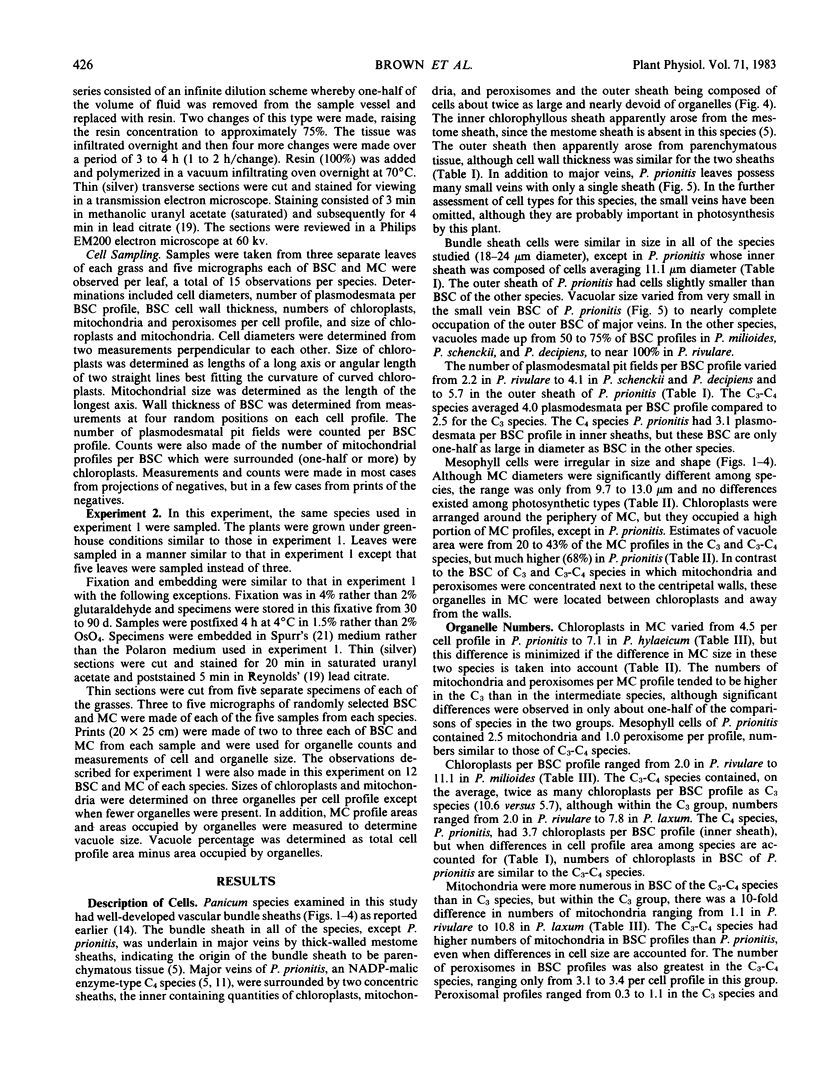
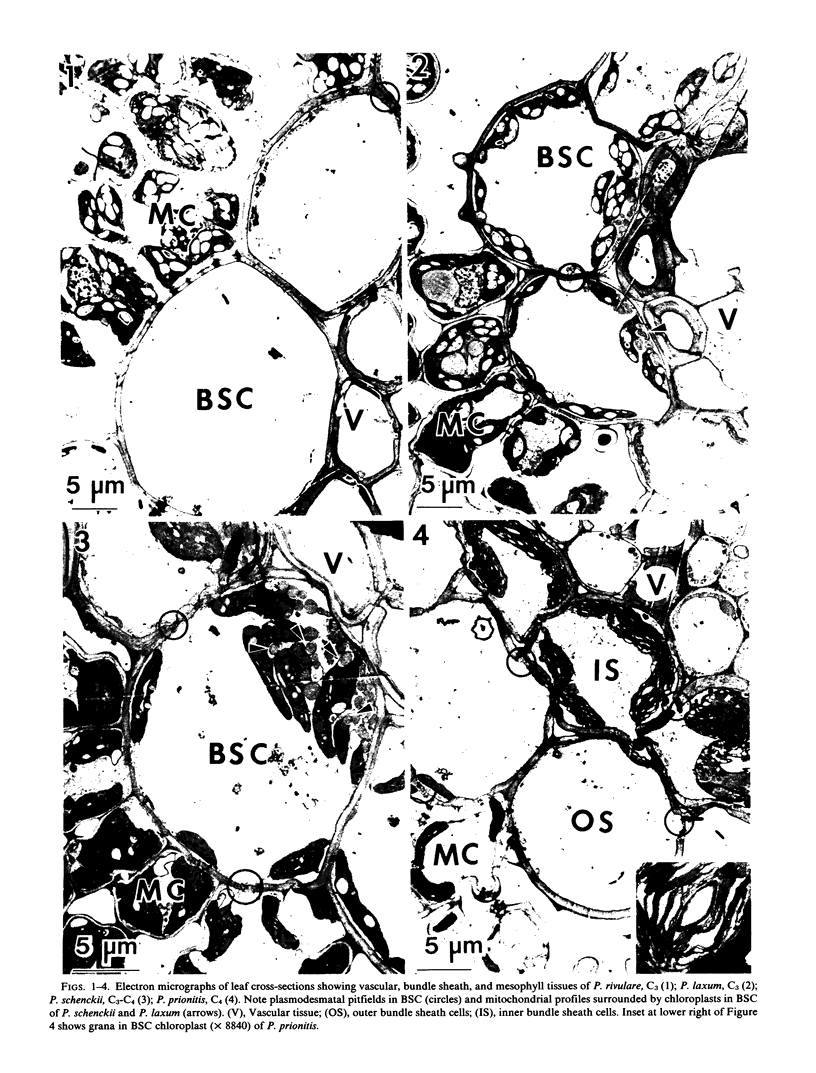
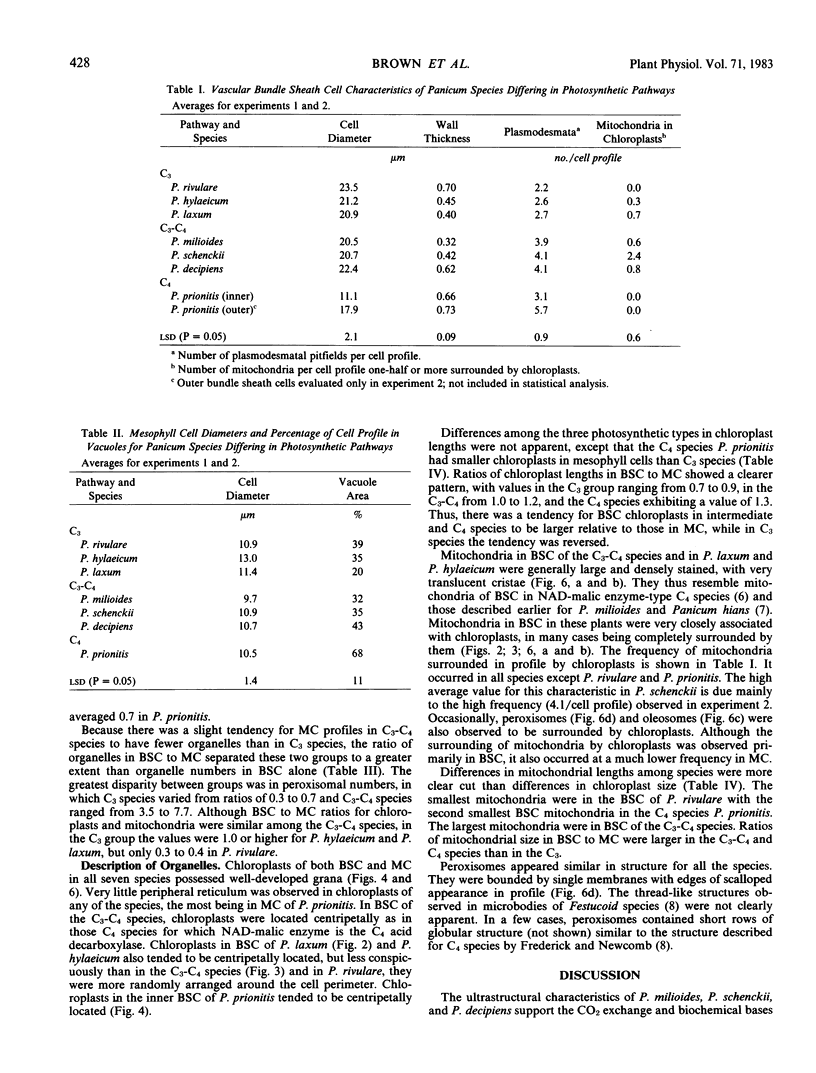

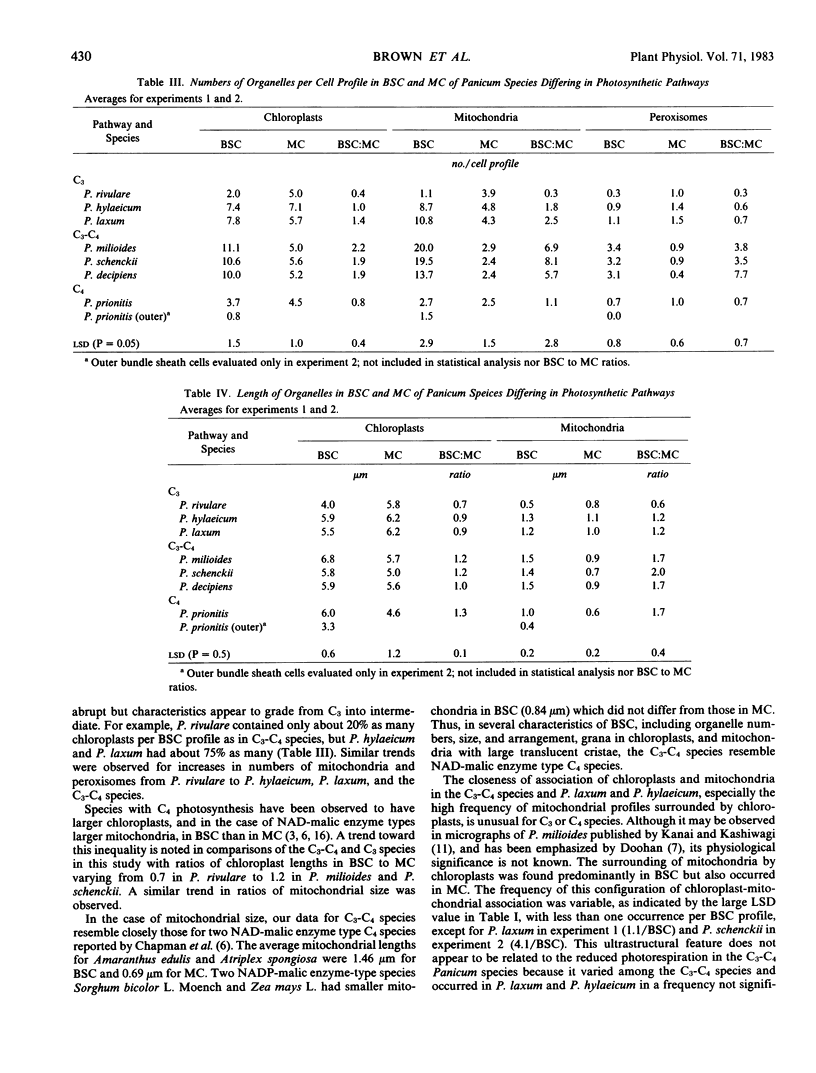

Images in this article
Selected References
These references are in PubMed. This may not be the complete list of references from this article.
- Black C. C., Mollenhauer H. H. Structure and distribution of chloroplasts and other organelles in leaves with various rates of photosynthesis. Plant Physiol. 1971 Jan;47(1):15–23. doi: 10.1104/pp.47.1.15. [DOI] [PMC free article] [PubMed] [Google Scholar]
- Morgan J. A., Brown R. H. Photosynthesis in Grass Species Differing in Carbon Dioxide Fixation Pathways: II. A Search for Species with Intermediate Gas Exchange and Anatomical Characteristics. Plant Physiol. 1979 Aug;64(2):257–262. doi: 10.1104/pp.64.2.257. [DOI] [PMC free article] [PubMed] [Google Scholar]
- Morgan J. A., Brown R. H. Photosynthesis in Grass Species Differing in Carbon Dioxide Fixation Pathways: III. OXYGEN RESPONSE AND ENZYME ACTIVITIES OF SPECIES IN THE LAXA GROUP OF PANICUM. Plant Physiol. 1980 Jan;65(1):156–159. doi: 10.1104/pp.65.1.156. [DOI] [PMC free article] [PubMed] [Google Scholar]
- REYNOLDS E. S. The use of lead citrate at high pH as an electron-opaque stain in electron microscopy. J Cell Biol. 1963 Apr;17:208–212. doi: 10.1083/jcb.17.1.208. [DOI] [PMC free article] [PubMed] [Google Scholar]
- Rathnam C. K., Chollet R. CO2 donation by malate and aspartate reduces photorespiration in Panicum milioides, a C3-C4 intermediate species. Biochem Biophys Res Commun. 1978 Nov 29;85(2):801–808. doi: 10.1016/0006-291x(78)91233-0. [DOI] [PubMed] [Google Scholar]
- Rathnam C. K., Chollet R. Photosynthetic carbon metabolism in Panicum milioides, a C3-C4 intermediate species: evidence for a limited C4 dicarboxylic acid pathway of photosynthesis. Biochim Biophys Acta. 1979 Dec 6;548(3):500–519. doi: 10.1016/0005-2728(79)90061-6. [DOI] [PubMed] [Google Scholar]
- Spurr A. R. A low-viscosity epoxy resin embedding medium for electron microscopy. J Ultrastruct Res. 1969 Jan;26(1):31–43. doi: 10.1016/s0022-5320(69)90033-1. [DOI] [PubMed] [Google Scholar]



